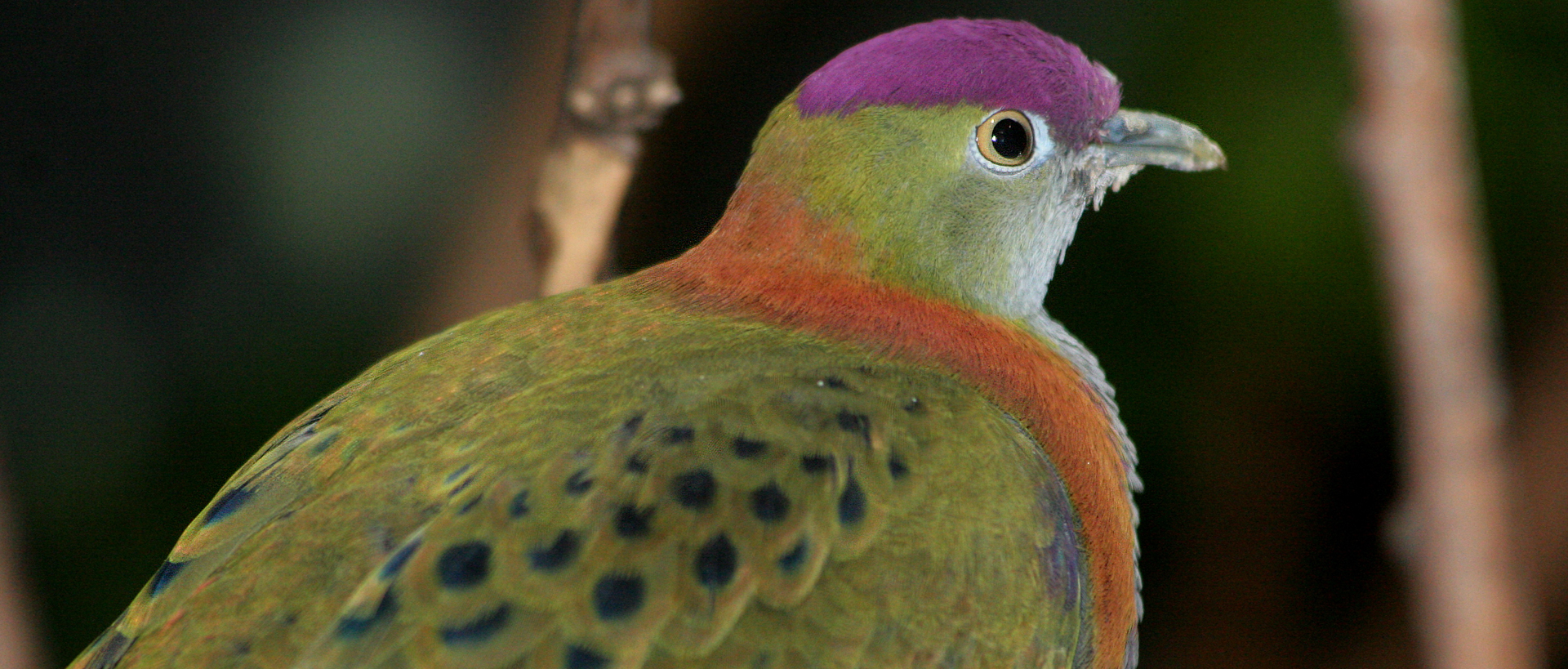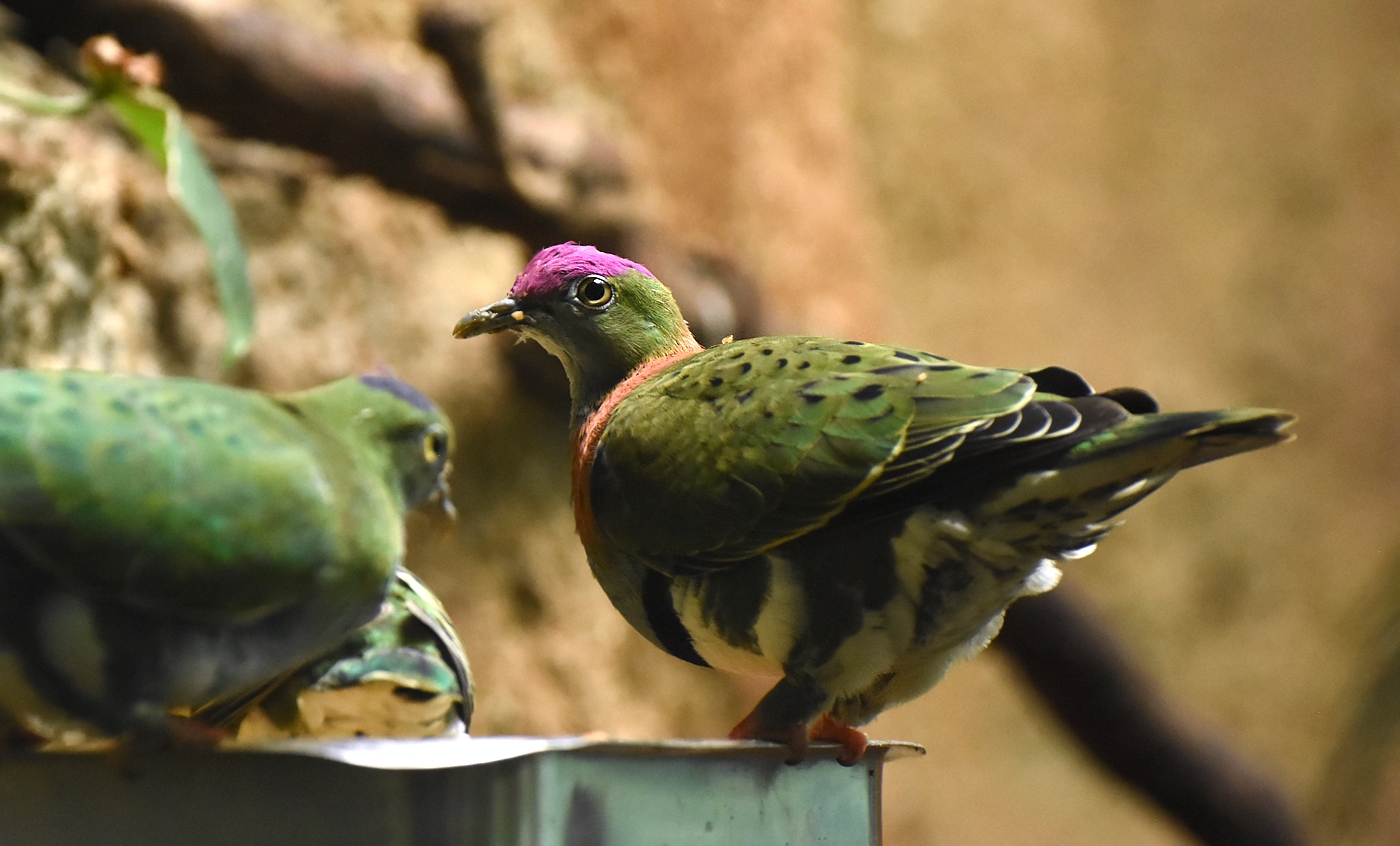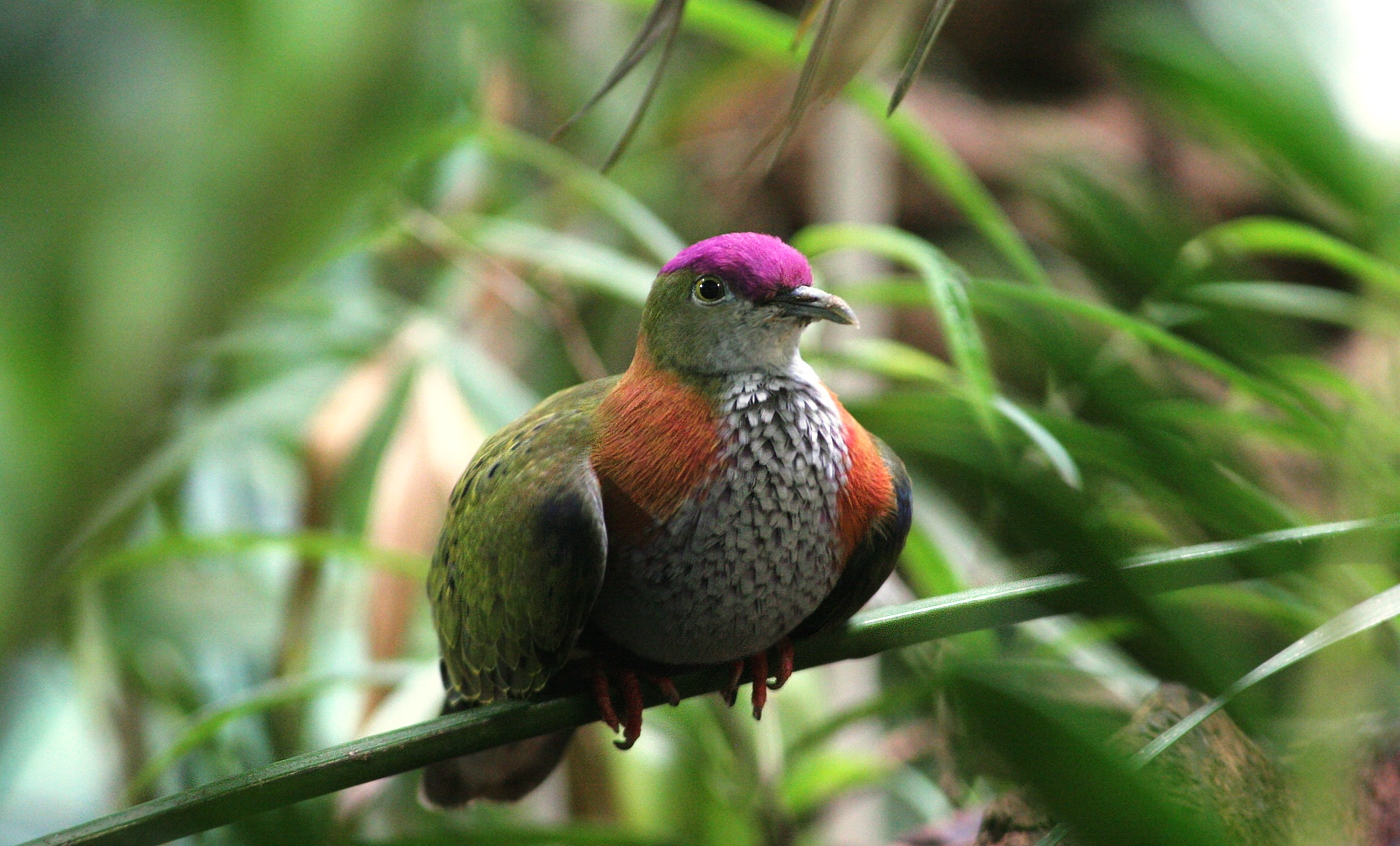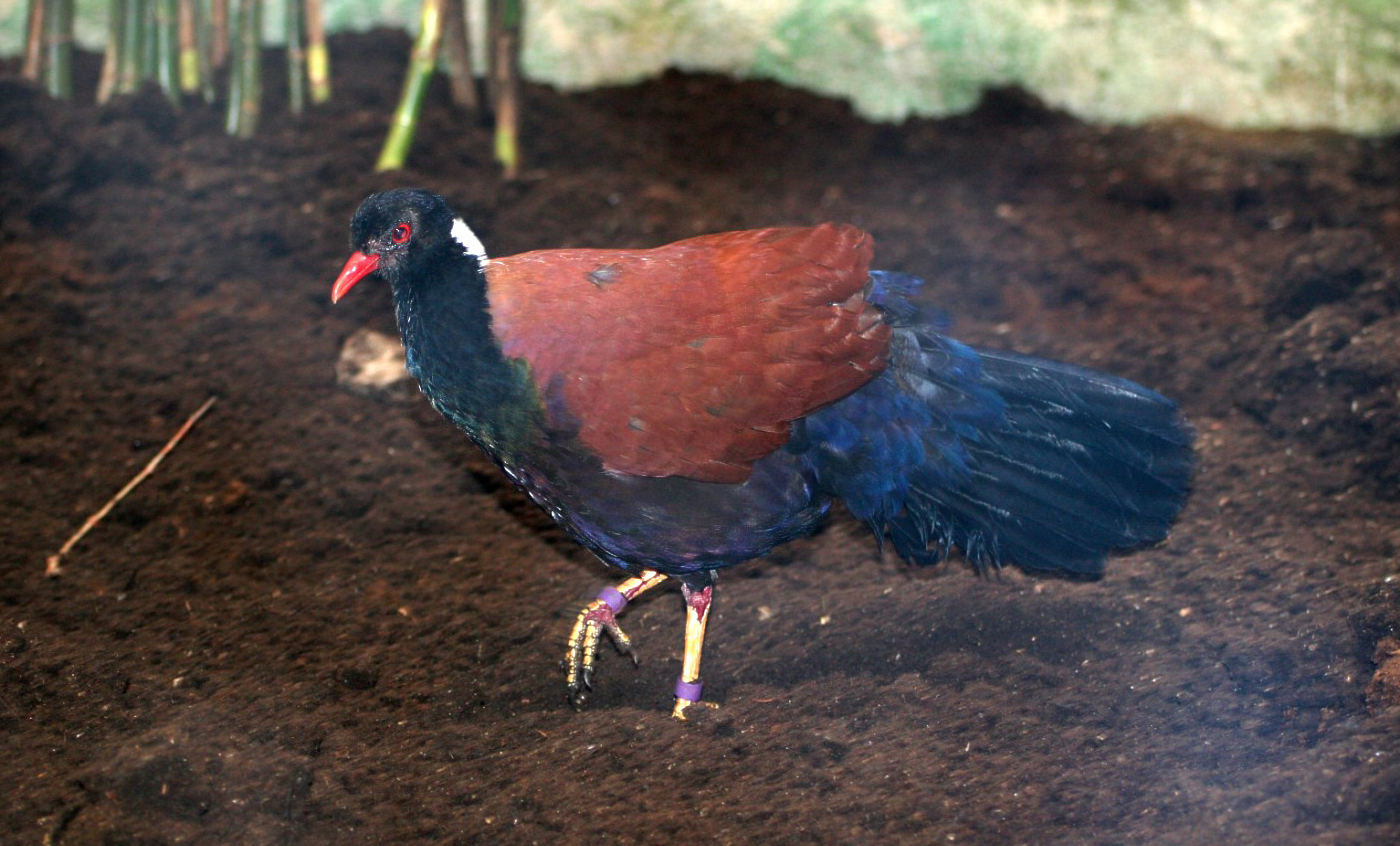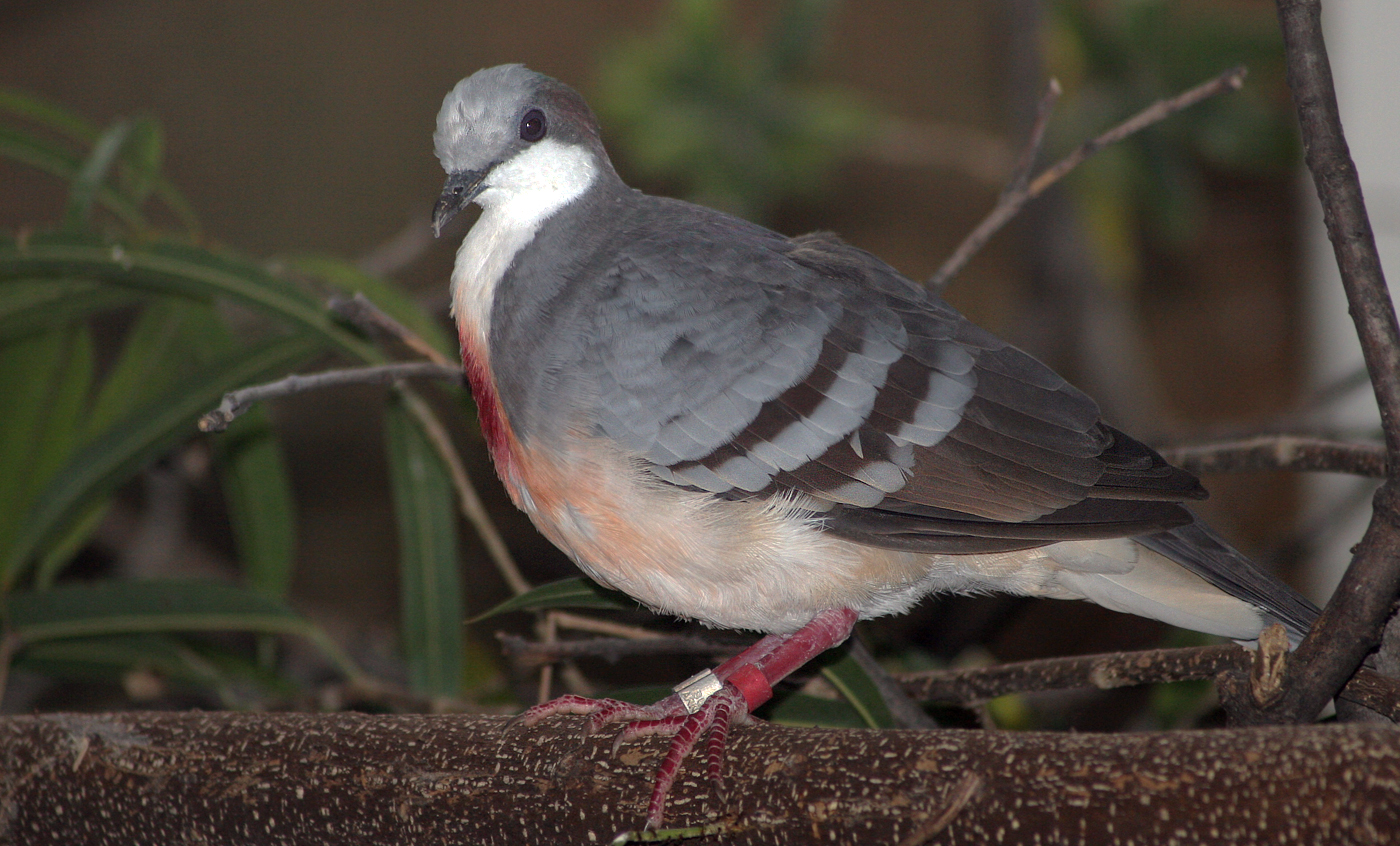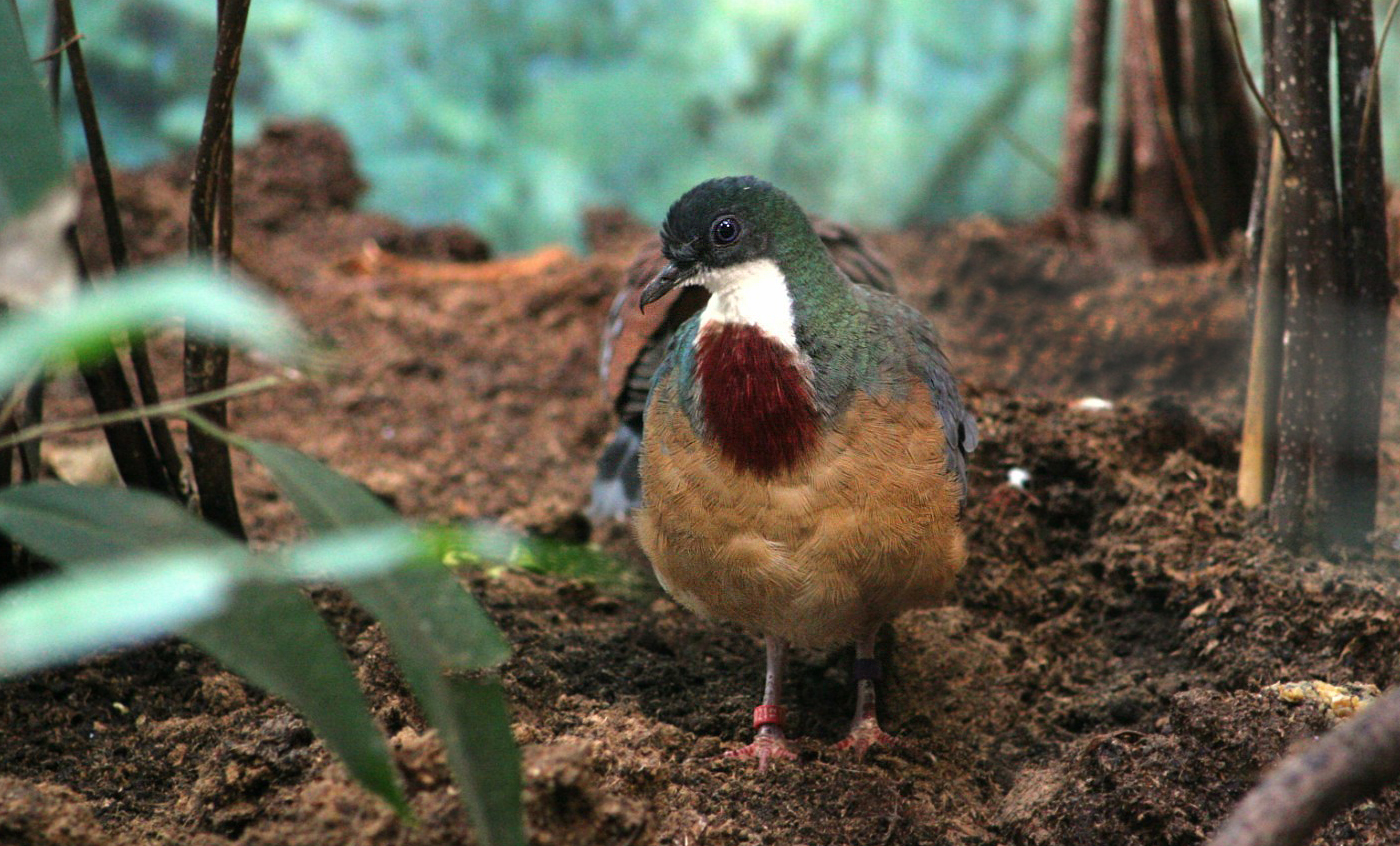Superb fruit dove
The superb fruit dove is a rainforest dove with significant sexual dimorphism: the female has green plumage with a white mark on the back of the head, while the male has a purple crown and orange neck. They lay a single egg which they both incubate, the male during the day and
the female at night.
Natural habit
Rainforests of New Guinea and Australia
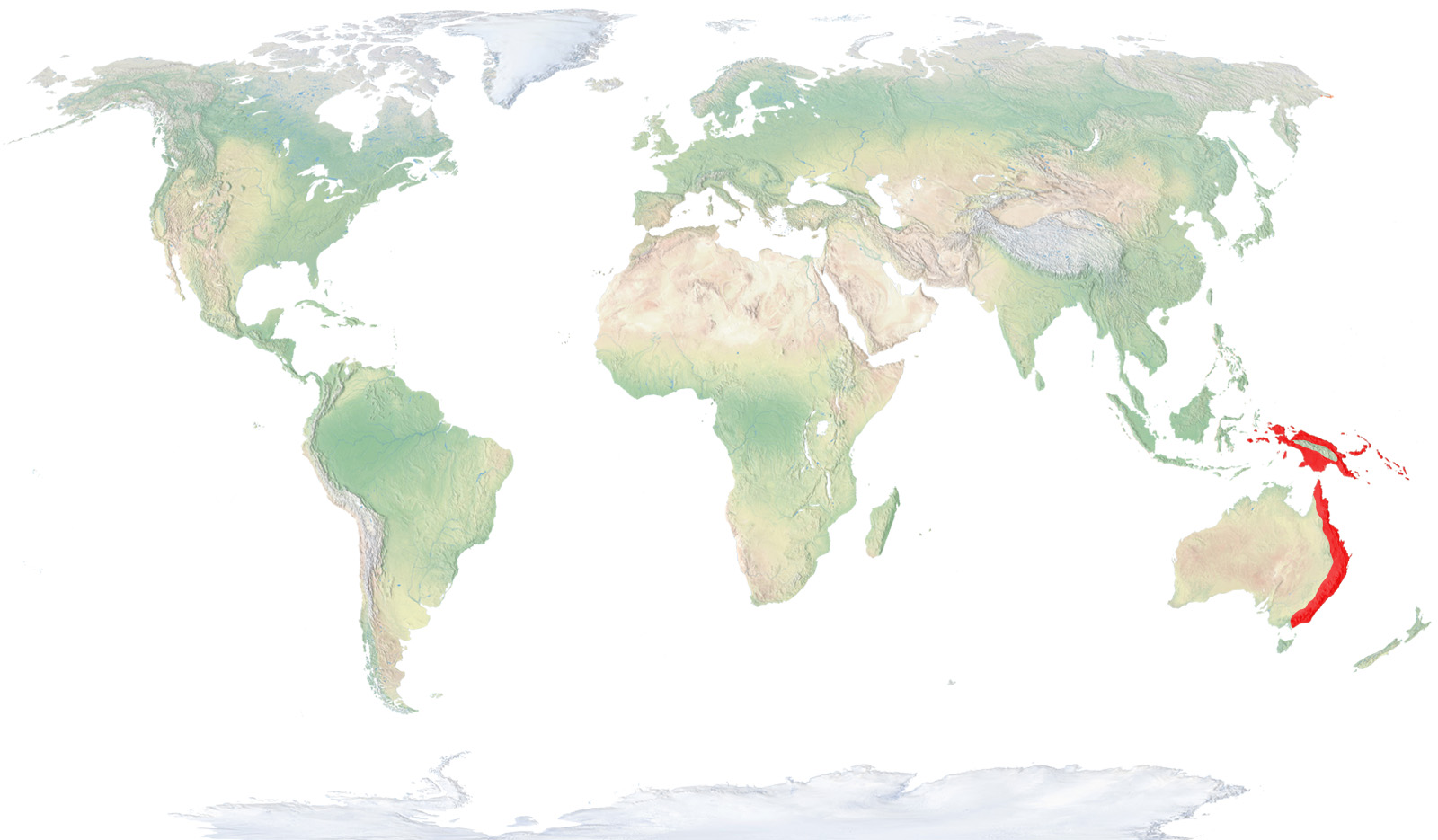
- Distribution / Resident
- Breeding
- Wintering
- Subspecies
Risk level
- Extint
- Extint in the wild
- Critically endangered
- In Danger
- Vulnerable
- Near threatened
- Minor concern
- Insufficient data
- Not evaluated
Taxonomy
Physical characteristics
Biology
Reproduction
Biology
The eastern superb fruit dove is a forest pigeon with marked sexual dimorphism: the female has green plumage with a blue spot at the back of its head, while the male has a purple crown and orange nape.
It occupies all types of forests, mangroves and farmlands with some tree cover in New Guinea and its surrounding islands and the east of Australia, from sea level to 2500 metres.
It is essentially frugivorous. It forms large food groups often, mixed with other Columbidae species.
It builds a simple nest with branches and plant matter, in which it lays a single egg that both members of the pair incubate, the male during the day and the female at night, for some 14 days.
The majority of this species' populations are resident and sedentary, although some subpopulations may be more nomadic.
It is locally abundant and common in the majority of its area of distribution. In some areas, generally islands and isolated regions, it is endangered due to the destruction of its habitat.




